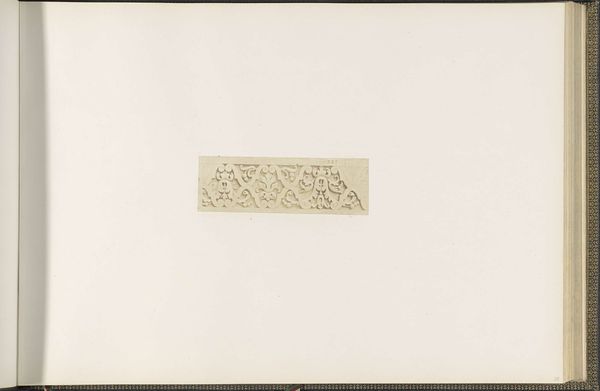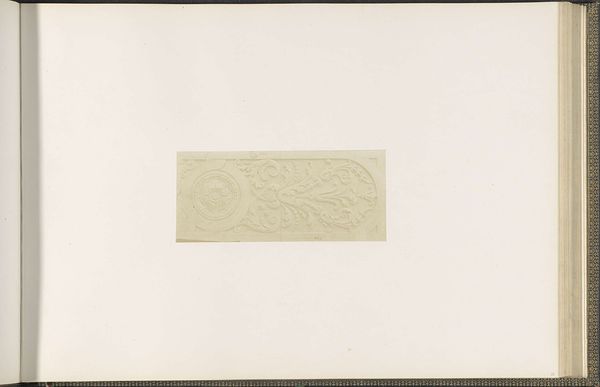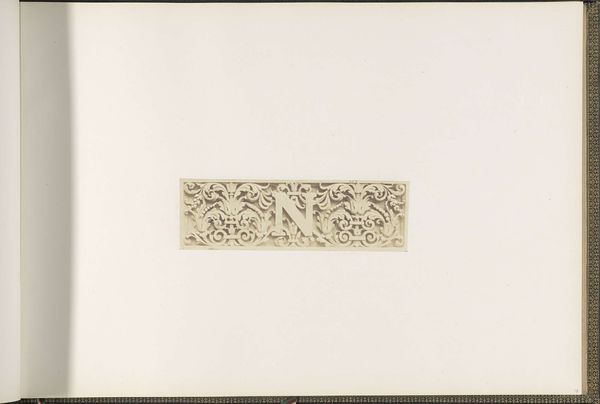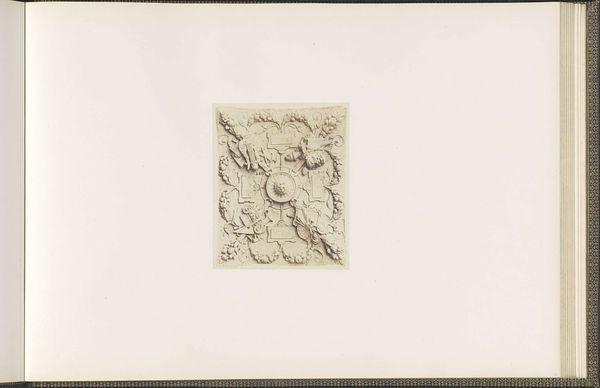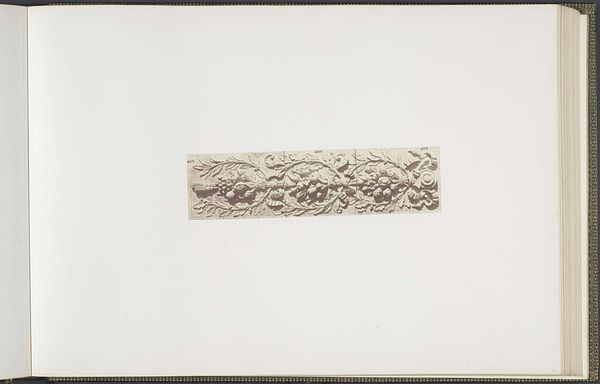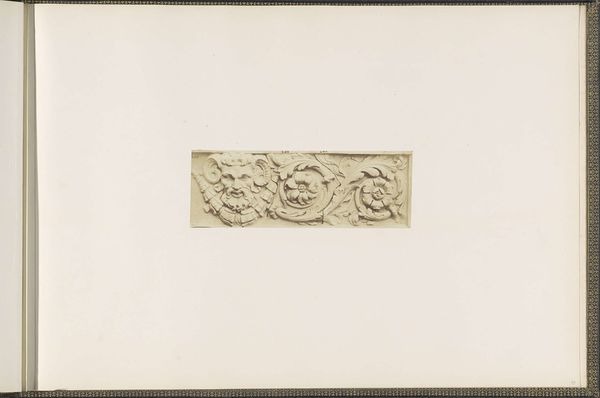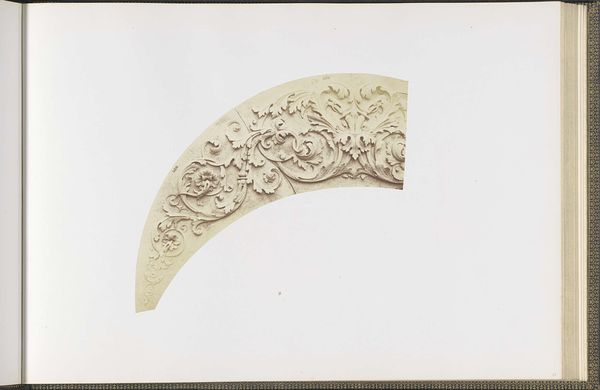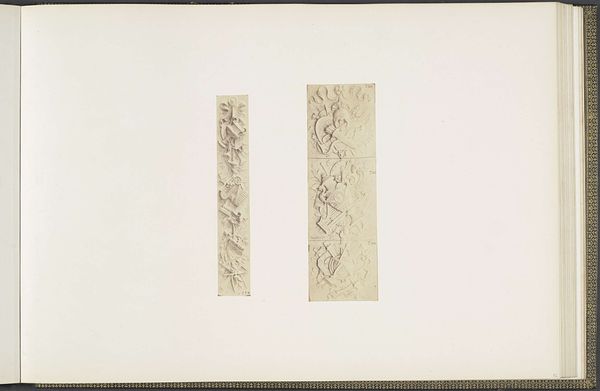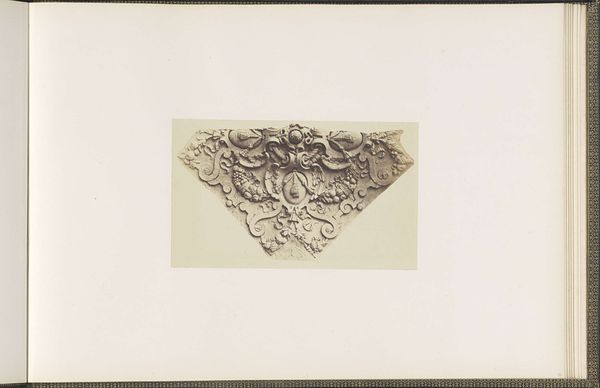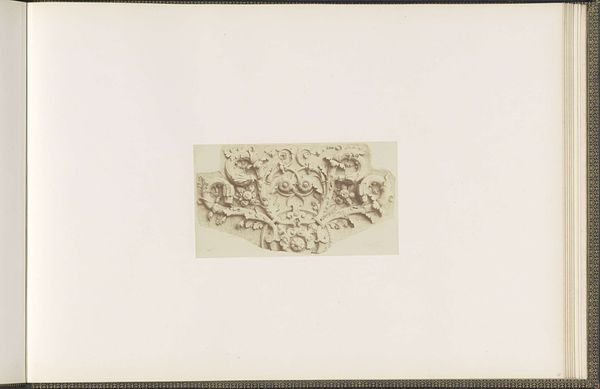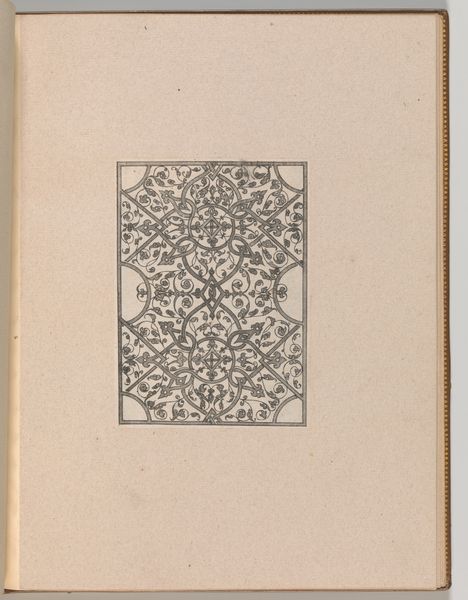
Gipsmodel voor gevelversiering op de Bibliothèque Impériale van het Palais du Louvre c. 1855 - 1857
0:00
0:00
edouardbaldus
Rijksmuseum
print, relief, paper, photography, architecture
#
neoclacissism
# print
#
relief
#
paper
#
photography
#
architecture
Dimensions: height 376 mm, width 523 mm
Copyright: Rijks Museum: Open Domain
Curator: This photograph by Édouard Baldus, taken around 1855 to 1857, documents a plaster model for facade decoration on the Bibliothèque Impériale of the Palais du Louvre. Editor: Wow, that’s intricate. It reminds me of delicate frosting on a cake. There's almost a rhythmic quality to the repeated patterns, a kind of visual music, muted, restrained. Curator: Indeed. The photograph's value lies in documenting the craft and labor embedded in the construction of the Louvre's imperial library. These decorative elements weren’t simply applied; skilled artisans produced them. Consider the social context: this model represents the pinnacle of craftsmanship during the Second Empire, a period of intensive building programs under Napoleon III. Editor: Absolutely. And I can imagine those artisans meticulously crafting this. It also strikes me how light affects the texture, making some parts stand out while others recede, almost like shadows telling a story. I wonder if the final facade achieved this effect? Curator: Baldus’ photography, primarily commissioned to record and promote such architectural endeavors, often overlooked the labor conditions and the intense resource extraction needed to achieve these imperial projects. This photograph then exists in an interesting tension. It's a promotion of imperial achievement but now functions as a window into forgotten practices of production and the materiality involved. Editor: I find it a bit melancholic now that you mention it. It almost feels like a fossil of a forgotten era, all those painstaking hours distilled into this still image. What do you make of its monochromatic nature? It almost enhances that antiquated sentiment. Curator: Exactly! While the black and white presentation could serve the didactic purpose of clarifying shapes for potential viewers or commissioners, today the photograph directs our gaze toward the past, hinting at a more muted experience of architecture under the weight of industrial progress. It reveals an industrial ambition rendered by classical forms. Editor: So much is captured in just this little rectangle. I now wonder how many hands shaped what we're viewing... and how they felt doing it. Curator: Precisely! A beautiful encapsulation of that complex interplay of process and presence. Editor: Beautiful, and beautifully captured.
Comments
No comments
Be the first to comment and join the conversation on the ultimate creative platform.
